EXPLAINED: Which types of face mask are now recommended for everyday use in France
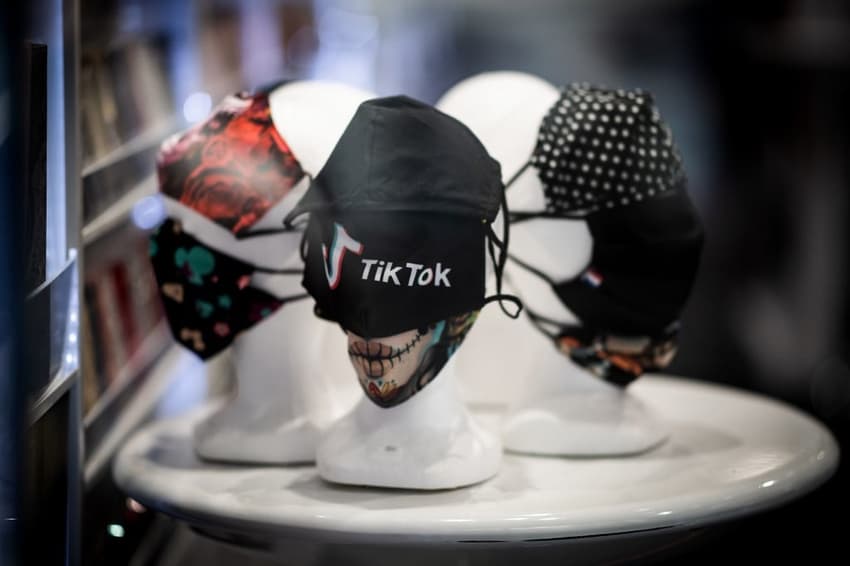
France has updated its advice on masks in the light of new, more contagious variants of the Covid-19 virus, here's what you need to know.
France's health advisory council (Haute Conseil de la Santé Publique HCPS) has amended its advice to the public for wearing protective face masks, saying that most types of fabric mask do not offer sufficient protection.
For their full advice, click here.
What are the rules?
Face masks are compulsory in all indoor public spaces in France, as well as in the street in 400 towns and cities. If you are caught without one, of wearing one without it fully covering your mouth and nose, you face a €135 fine.
However currently there is not rule on the type of mask, only that it must fully cover your mouth and nose, and the guidance given below remains, for the moment, advice only.
Private businesses are free to set their own rules and some require surgical masks only.
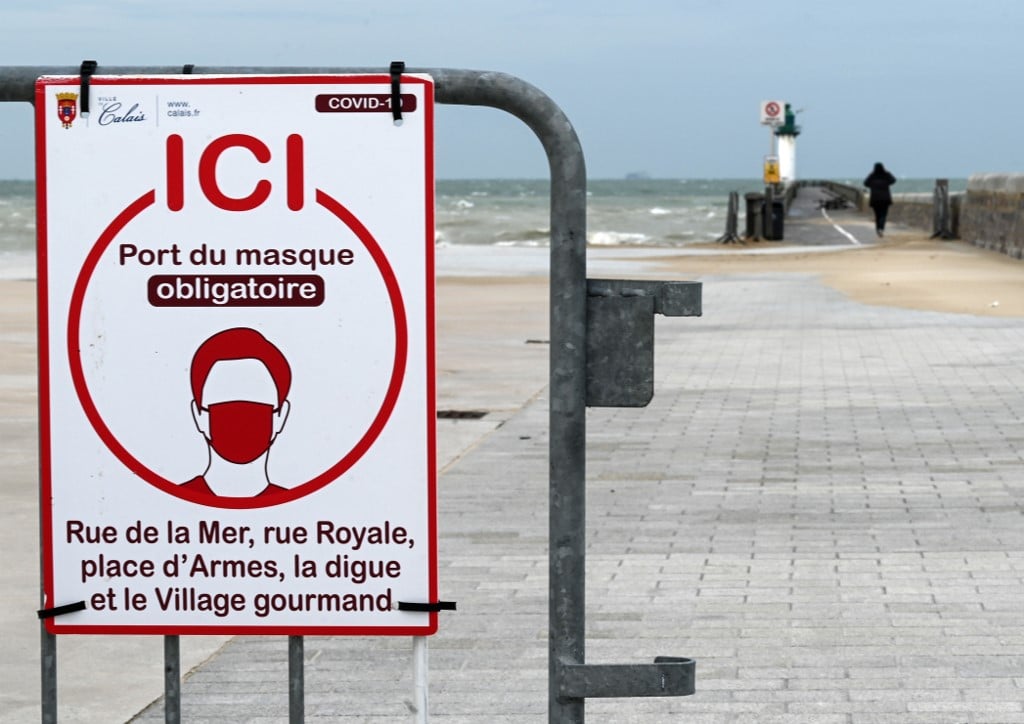
Masks are compulsory in many outdoor areas as well as all indoor public spaces. Photo: AFP
So what mask to wear?
These are still recommendations at the stage, but the Council's recommendation is to wear a category 1 mask, rather than a category 2.
Category 2 masks are those that have been proved to filter more than 70 percent. Known as masques du grand public (masks for the general public) these are most cloth masks and were the ones advised to the general public last spring, and remain common.
Category 1 masks are those that filter more than 90 percent of particles. This includes the FFP2 filter masks, the blue single-use surgical masks and certain types of fabric masks that meet specifications. The issue with fabric masks is that most are made in France, rather than imported, and a lot do not display filtration levels allowing you to know which category they fall in.
Didier Lepelletier of the HCPS said everyone now should opt for category 1 masks.
He advised against purchasing FFP2 masks - the most protective ones - as these are difficult to wear right and lose efficiency when worn wrong. Health staff, who use these masks, are trained in how to wear them correctly.
Commenting on the new advice, several health experts also told BFMTV that it is much better to wear a fabric mask than to incorrectly wear an FFP2 mask.
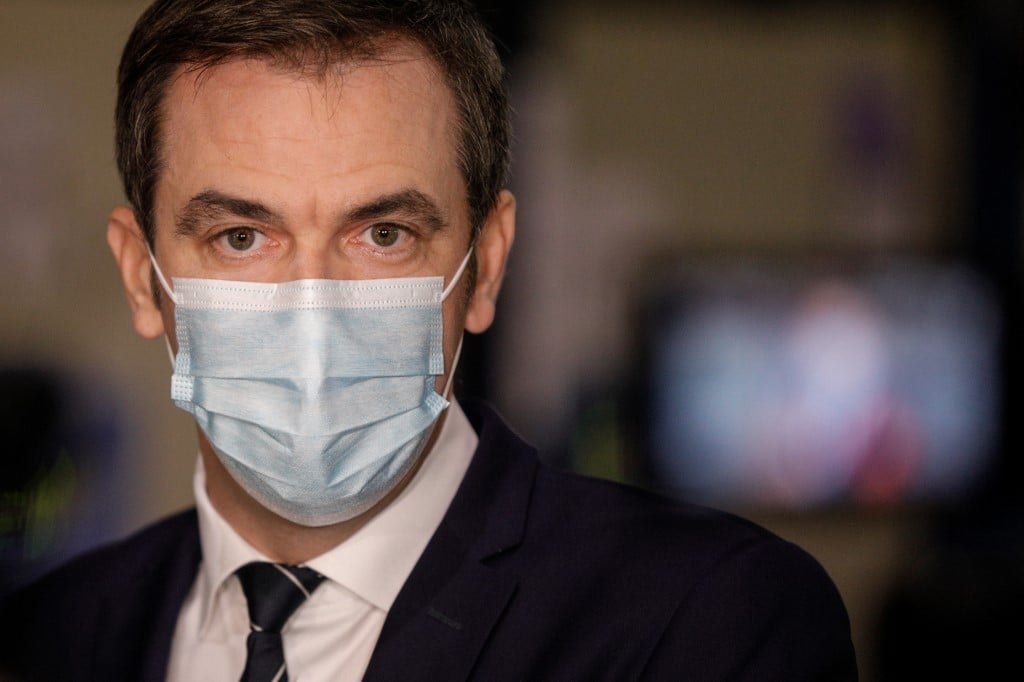
Health minister Olivier Véran models a single-use surgical face mask. Photo; AFP
What to look for when buying a mask
Figuring out whether you're buying a category 1 or category 2 mask is not quite as simple as it seems - many surgical masks are labelled Type II - but this is not the same as category 2.
You should look for filtration level first and get one that is 90 percent or more.
Almost all types of the blue surgical masks should be above 90 percent, but check the box for filtration level and/or type level - any surgical masks labelled as Type I, Type II or Type IIR filter more than 90 percent.
If you are buying surgical masks from a large chain store or multinational they should comply to international standards, but if you are buying from a smaller or independent store you should also check that the mask packaging includes information on how many masks a package contains, the name and address of the producer, the expiry date, how to stock them and instructions for use.
They should also include a mention on their norm, depending on whether they were produced in Europe (EN14682), the US (ASTM F2100-19, level 1, 2 and 3) or in China (YY 0469-2011). All of these three have been officially approved.
Fabric masks also need a label stating that they filter more than 90 percent or comply to category 1 levels. If they don't have a label - and most of the ones produced in smaller independent stores in France don't - then they cannot be guaranteed to have the correct level of filtration. Fabric masks confirming to category 1 specifications should also include how many times they can be washed before being discarded.
Home-made masks - while many people have enjoyed making their own masks, sometimes coordinated to outfits, these are now completely advised against. The HSPC says that even masks made by people who follow the Afnor specifications cannot be guaranteed to give the correct level of protection.
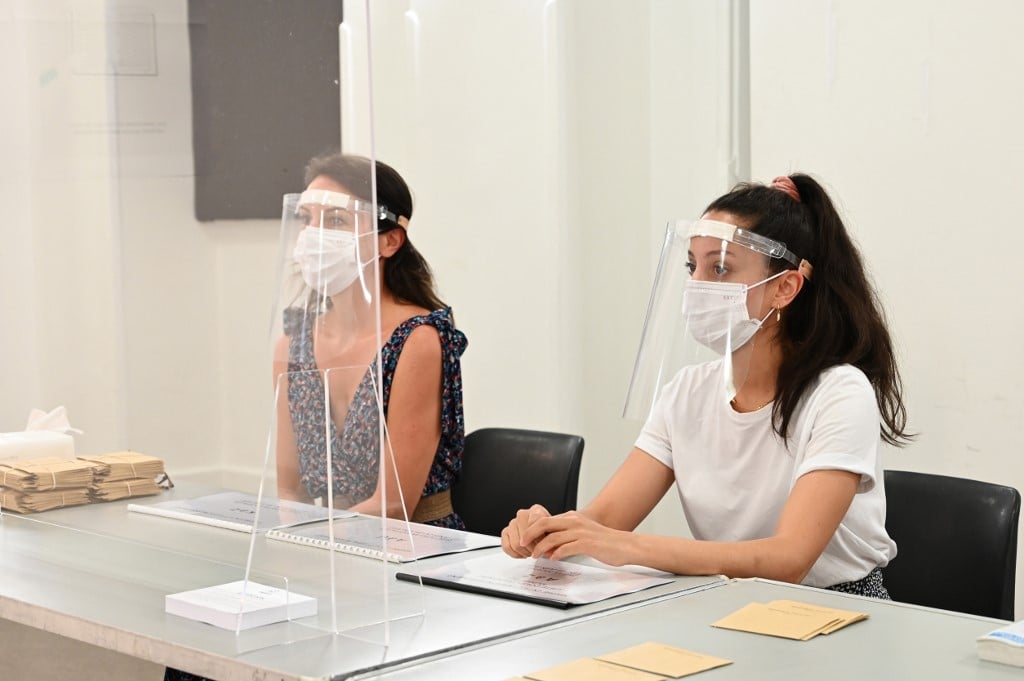
Volunteers wearing face shields during France's 2020 municipal elections as an extra protective measure. Photo: AFP
Face shields - the plastic face visors have never been accepted as a sufficient protection in France and you can be fined if you are wearing one of these without a proper masks underneath.
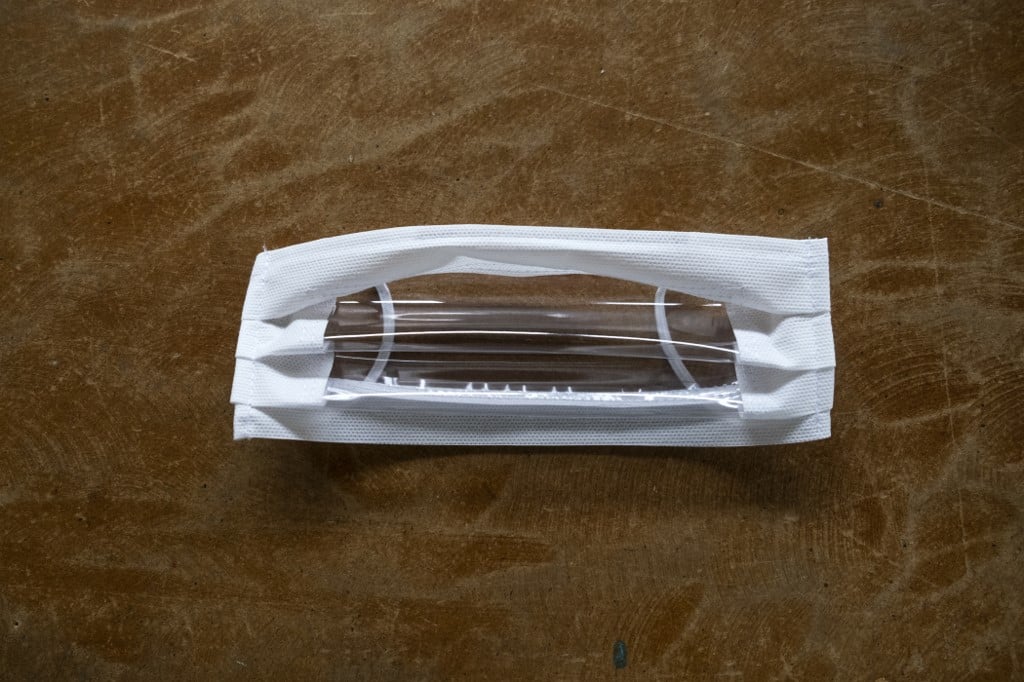
A see-through mask adapted to the needs of the hearing impaired. Photo: AFP
See-through masks - an increasing number of retailers now stock masks with transparent panels in order to help people with hearing problems to lip read. These are generally fabric masks with a plastic centre panel so the same rules apply as to other types of fabric masks.
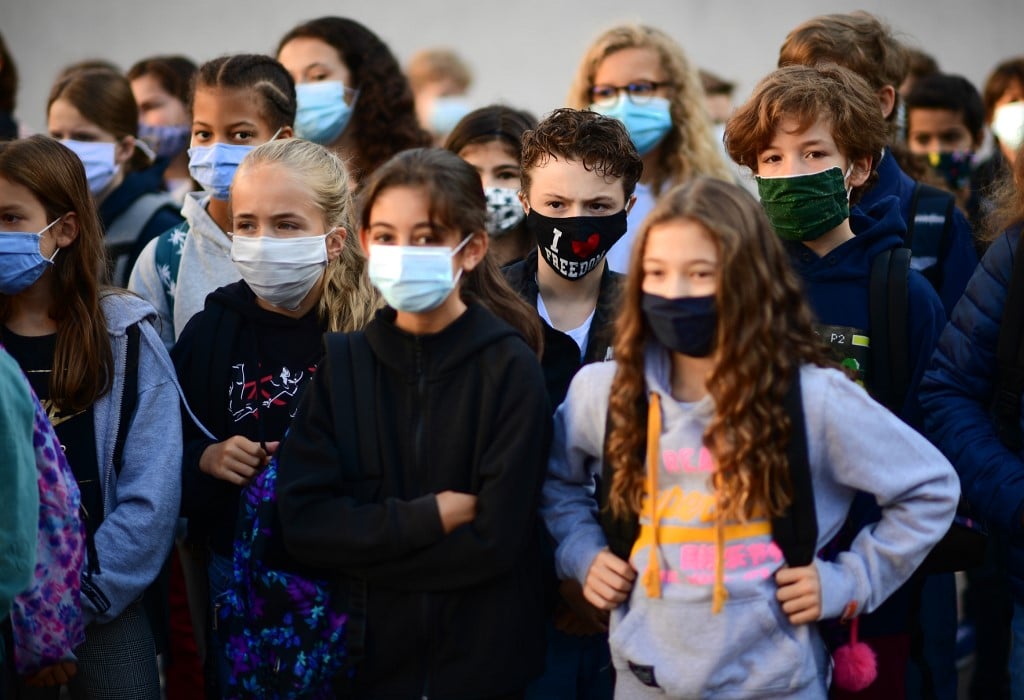
Face masks are obligatory in French schools. Photo: AFP
Children's masks - masks are compulsory in schools for all children over the age of six. Parents are responsible for equipping their child with a mask and there are no rules on what kind of mask is allowed in schools.
However on Tuesday, the education minister asked parents to '"be careful of the poor quality of some masks and prioritise surgical masks and Afnor 1," referring to the category 1 masks.
"We are more inviting than coercive on this topic," Jean-Michel Blanquer,said adding that "perhaps we will arrive at something obligatory in a few days. But for now we must above all inform everyone.
Masques en tissu : "On diffuse des masques de catégorie 1, de norme Afnor, et ne sont pas concernés par cet avis" du Haut Conseil de la santé publique, déclare Jean-Michel Blanquer, ministre de l'Éducation
Suivez le direct ⤵https://t.co/cEwi3c61QM pic.twitter.com/RGo7qJNkdZ
— franceinfo (@franceinfo) January 19, 2021
The government also provides schools with stocks of extra masks, in case a child needs a spare one. Blanquer stressed that the masks furnished by the government were category 1 masks.
Comments (3)
See Also
France's health advisory council (Haute Conseil de la Santé Publique HCPS) has amended its advice to the public for wearing protective face masks, saying that most types of fabric mask do not offer sufficient protection.
For their full advice, click here.
What are the rules?
Face masks are compulsory in all indoor public spaces in France, as well as in the street in 400 towns and cities. If you are caught without one, of wearing one without it fully covering your mouth and nose, you face a €135 fine.
However currently there is not rule on the type of mask, only that it must fully cover your mouth and nose, and the guidance given below remains, for the moment, advice only.
Private businesses are free to set their own rules and some require surgical masks only.

Masks are compulsory in many outdoor areas as well as all indoor public spaces. Photo: AFP
So what mask to wear?
These are still recommendations at the stage, but the Council's recommendation is to wear a category 1 mask, rather than a category 2.
Category 2 masks are those that have been proved to filter more than 70 percent. Known as masques du grand public (masks for the general public) these are most cloth masks and were the ones advised to the general public last spring, and remain common.
Category 1 masks are those that filter more than 90 percent of particles. This includes the FFP2 filter masks, the blue single-use surgical masks and certain types of fabric masks that meet specifications. The issue with fabric masks is that most are made in France, rather than imported, and a lot do not display filtration levels allowing you to know which category they fall in.
Didier Lepelletier of the HCPS said everyone now should opt for category 1 masks.
He advised against purchasing FFP2 masks - the most protective ones - as these are difficult to wear right and lose efficiency when worn wrong. Health staff, who use these masks, are trained in how to wear them correctly.
Commenting on the new advice, several health experts also told BFMTV that it is much better to wear a fabric mask than to incorrectly wear an FFP2 mask.

Health minister Olivier Véran models a single-use surgical face mask. Photo; AFP
What to look for when buying a mask
Figuring out whether you're buying a category 1 or category 2 mask is not quite as simple as it seems - many surgical masks are labelled Type II - but this is not the same as category 2.
You should look for filtration level first and get one that is 90 percent or more.
Almost all types of the blue surgical masks should be above 90 percent, but check the box for filtration level and/or type level - any surgical masks labelled as Type I, Type II or Type IIR filter more than 90 percent.
If you are buying surgical masks from a large chain store or multinational they should comply to international standards, but if you are buying from a smaller or independent store you should also check that the mask packaging includes information on how many masks a package contains, the name and address of the producer, the expiry date, how to stock them and instructions for use.
They should also include a mention on their norm, depending on whether they were produced in Europe (EN14682), the US (ASTM F2100-19, level 1, 2 and 3) or in China (YY 0469-2011). All of these three have been officially approved.
Fabric masks also need a label stating that they filter more than 90 percent or comply to category 1 levels. If they don't have a label - and most of the ones produced in smaller independent stores in France don't - then they cannot be guaranteed to have the correct level of filtration. Fabric masks confirming to category 1 specifications should also include how many times they can be washed before being discarded.
Home-made masks - while many people have enjoyed making their own masks, sometimes coordinated to outfits, these are now completely advised against. The HSPC says that even masks made by people who follow the Afnor specifications cannot be guaranteed to give the correct level of protection.

Volunteers wearing face shields during France's 2020 municipal elections as an extra protective measure. Photo: AFP
Face shields - the plastic face visors have never been accepted as a sufficient protection in France and you can be fined if you are wearing one of these without a proper masks underneath.

A see-through mask adapted to the needs of the hearing impaired. Photo: AFP
See-through masks - an increasing number of retailers now stock masks with transparent panels in order to help people with hearing problems to lip read. These are generally fabric masks with a plastic centre panel so the same rules apply as to other types of fabric masks.

Face masks are obligatory in French schools. Photo: AFP
Children's masks - masks are compulsory in schools for all children over the age of six. Parents are responsible for equipping their child with a mask and there are no rules on what kind of mask is allowed in schools.
However on Tuesday, the education minister asked parents to '"be careful of the poor quality of some masks and prioritise surgical masks and Afnor 1," referring to the category 1 masks.
"We are more inviting than coercive on this topic," Jean-Michel Blanquer,said adding that "perhaps we will arrive at something obligatory in a few days. But for now we must above all inform everyone.
Masques en tissu : "On diffuse des masques de catégorie 1, de norme Afnor, et ne sont pas concernés par cet avis" du Haut Conseil de la santé publique, déclare Jean-Michel Blanquer, ministre de l'Éducation
— franceinfo (@franceinfo) January 19, 2021
Suivez le direct ⤵https://t.co/cEwi3c61QM pic.twitter.com/RGo7qJNkdZ
The government also provides schools with stocks of extra masks, in case a child needs a spare one. Blanquer stressed that the masks furnished by the government were category 1 masks.
Join the conversation in our comments section below. Share your own views and experience and if you have a question or suggestion for our journalists then email us at [email protected].
Please keep comments civil, constructive and on topic – and make sure to read our terms of use before getting involved.
Please log in here to leave a comment.